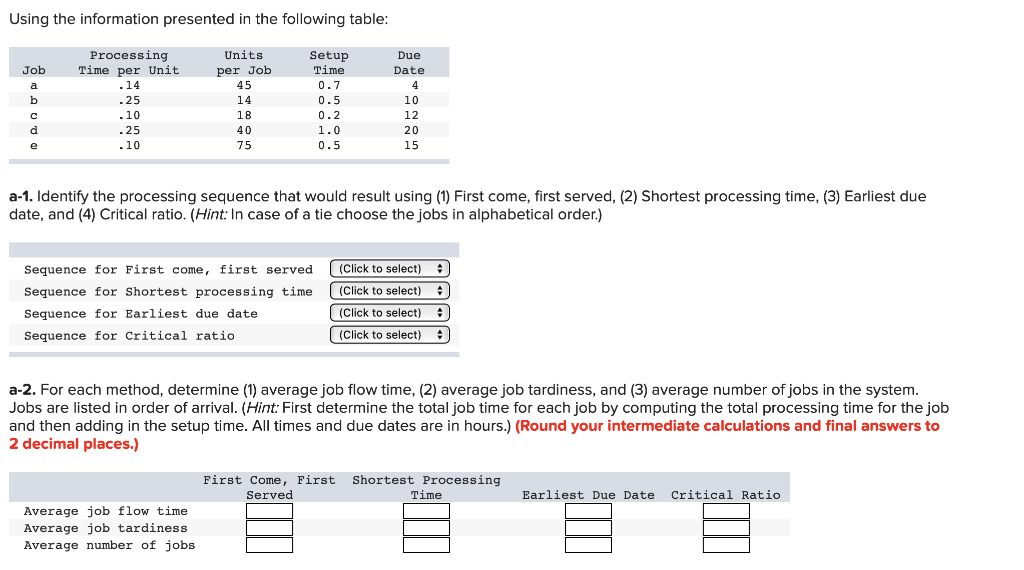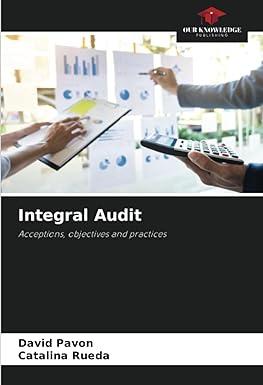
Using the information presented in the following table: Job Units per Job Due Date Processing Time per Unit .14 .25 .10 10 Setup Time 0.7 0.5 0.2 1.0 0.5 14 18 40 AUDO 12 .25 20 .10 a-1. Identify the processing sequence that would result using (1) First come, first served, (2) Shortest processing time, (3) Earliest due date, and (4) Critical ratio. (Hint: In case of a tie choose the jobs in alphabetical order.) ) ) Sequence for First come, first served Sequence for shortest processing time Sequence for Earliest due date Sequence for Critical ratio (Click to select) (Click to select) (Click to select) (Click to select) ) a-2. For each method, determine (1) average job flow time, (2) average job tardiness, and (3) average number of jobs in the system. Jobs are listed in order of arrival. (Hint: First determine the total job time for each job by computing the total processing time for the job and then adding in the setup time. All times and due dates are in hours.) (Round your intermediate calculations and final answers to 2 decimal places.) Time Earliest Due Date Critical Ratio First Come, First Shortest Processing Served Average job flow time Average job tardiness Average number of jobs Using the information presented in the following table: Job Units per Job Due Date Processing Time per Unit .14 .25 .10 10 Setup Time 0.7 0.5 0.2 1.0 0.5 14 18 40 AUDO 12 .25 20 .10 a-1. Identify the processing sequence that would result using (1) First come, first served, (2) Shortest processing time, (3) Earliest due date, and (4) Critical ratio. (Hint: In case of a tie choose the jobs in alphabetical order.) ) ) Sequence for First come, first served Sequence for shortest processing time Sequence for Earliest due date Sequence for Critical ratio (Click to select) (Click to select) (Click to select) (Click to select) ) a-2. For each method, determine (1) average job flow time, (2) average job tardiness, and (3) average number of jobs in the system. Jobs are listed in order of arrival. (Hint: First determine the total job time for each job by computing the total processing time for the job and then adding in the setup time. All times and due dates are in hours.) (Round your intermediate calculations and final answers to 2 decimal places.) Time Earliest Due Date Critical Ratio First Come, First Shortest Processing Served Average job flow time Average job tardiness Average number of jobs







